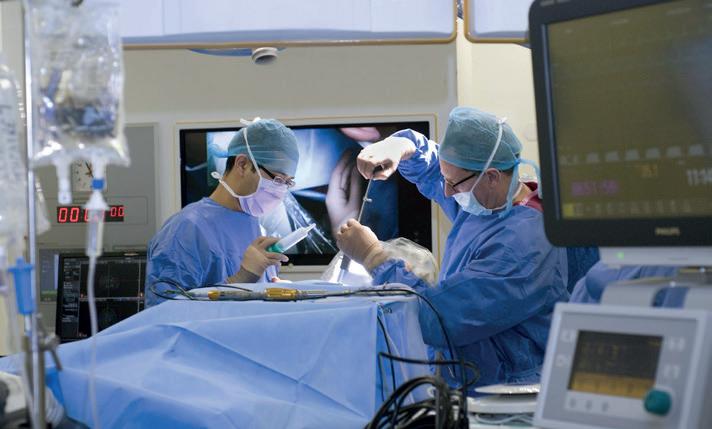
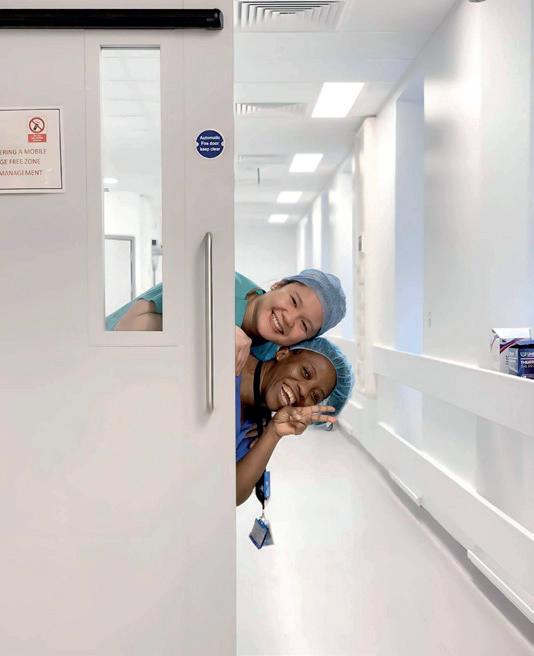

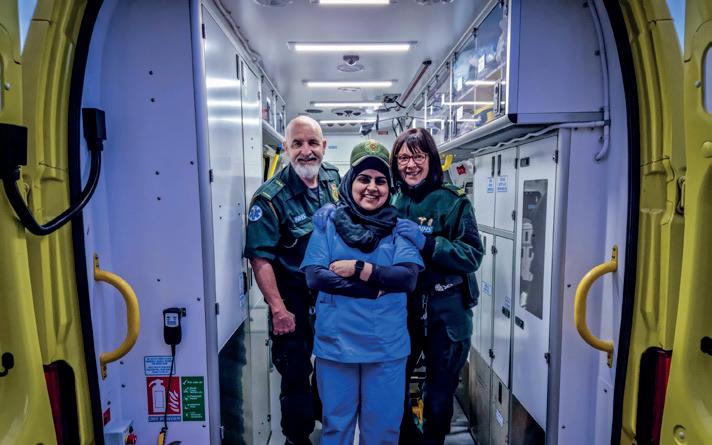


Our NHS at 75 A photo exhibition through the lens of NHS staff and volunteers 5 July - 31 August • Covent Garden, London 75 75 Years Su p po r tin g th e NHS www.healthawareness.co.uk Q2 2023 | A promotional supplement distributed on behalf of Mediaplanet, which takes sole responsibility for its content “Initiatives have benefitedover 2.2 million patients and saved the NHS approximately £164 million.” Professor Gary Ford, Chair, The AHSN Network Page 02
collective societal response is required to shift the dial on systemic local and regional health disparities.”
“A
Confederation
06
Dr Layla McCay, Director of Policy, NHS
Page
Bringing innovation into the NHS at scale to benefit thousands of patients
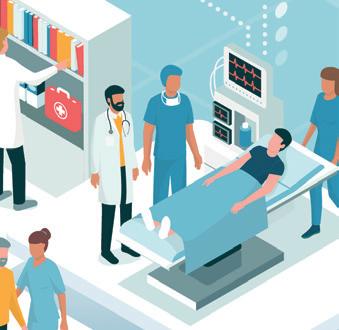


Bringing together expertise from the NHS, research and industry are accelerating the spread and adoption of innovation, which will benefit patients for years to come.
As we mark the 75th birthday of the NHS, England’s 15 Academic Health Science Networks (AHSNs) are celebrating an anniversary of their own. The Network has been helping identify, adopt and spread promising innovations for 10 years, bringing together the life science industry, universities and the NHS.
A health network supporting the NHS
Collectively, AHSNs have contributed to improvements in health outcomes and supported economic growth. Since 2018, the Network has played a lead role in generating more than £1.3 billion in investment in UK life science companies and securing or protecting more than 5,400 jobs. They have delivered a return on investment of almost £4 for every £1 commissioned.*
Support ranging from cardiovascular to maternal

Over the last five years, they have delivered 10 national adoption and spread programmes in line with local and national priorities, particularly in cardiovascular disease, respiratory disease, mental health and maternity/neonatal care. They have also supported the rapid uptake of 28 NICE-approved products. These initiatives have benefited over 2.2 million patients and saved the NHS approximately £164 million.
One example has been identifying atrial fibrillation risks, preventing thousands of strokes and saving hundreds of lives. Currently, the Network is engaged in increasing access to appropriate medicines for lipid management, including novel therapies.
In maternity safety, almost 300 pre-term babies avoided
cerebral palsy due to the wider use of magnesium sulphate, while 35,000 pregnant women each year are benefiting from the widespread adoption of a blood test to rule out pre-eclampsia.
Other national programmes have included supporting young people with eating disorders, helping improve the diagnosis of attention deficit hyperactivity disorder (ADHD) in children, better diagnosis and treatment of severe asthma and improving medicines safety.
Continuous work championing innovation
As they move into their second decade, AHSNs remain committed to championing and scaling the best healthcare innovations. One example is harnessing AI technology in brain imaging to speed up access to stroke care, reducing long-term disability and improving patient outcomes. They will continue to support the NHS with its most pressing issues, including helping to deliver a net zero NHS by 2040, addressing health inequalities and improving patient safety.
*Based on £13m annual funding from the Office for Life Sciences (OLS); ROI of 1:3.96 based on HMP Green Book methodology.
WRITTEN BY Professor Gary Ford Chair, The AHSN Network

02 MEDIAPLANET A PROMOTIONAL SUPPLEMENT DISTRIBUTED ON BEHALF OF MEDIAPLANET, WHICH TAKES SOLE RESPONSIBILITY FOR ITS CONTENTS READ MORE AT HEALTHAWARENESS.CO.UK
can find your local Academic Health Science Network at ahsnnetwork.com
You
@BusinessandindustryUK Contact information: uk.info@mediaplanet.com or +44 (0) 203 642 0737 @MediaplanetUK Please recycle
IN THIS ISSUE
“In addition to big data, there have been technological and system advances aimed at supporting healthcare workers.”
Jonathan Davies
08
Digital Health Lead, ABHI
Page
“We must ensure that we support the physical and mental wellbeing of the NHS staff.”
10 Senior Project Manager: Jack Adamson jack.adamson@mediaplanet.com Senior Business Development Manager: Josie Mason Managing Director: Alex Williams Head of Business Development: Ellie McGregor | Head of Print & Design: Thomas Kent Designer: Aimee Rayment Content Editor: Angelica Hackett O’Toole | Head of Digital Operations: Harvey O’Donnell Paid Media Strategist: Jonni Asfaha Social & Web Editor: Henry Phillips Digital Assistant: Carolina Galbraith Duarte | All images supplied by Gettyimages, unless otherwise specified
promising innovations for
years. Want to get involved in a future campaign? Send us an email at uk.info@mediaplanet.com
Jasmin Adebisi Policy Manager for Health, Policy Connect
Page
The
Network has been helping identify, adopt and spread
10
Major opportunities for AI to aid in healthcare for chronic conditions
The Major Conditions Strategy can pave the way for NHS transformation while meeting the challenges of today, but only if we are willing to bet on artificial intelligence (AI) to address the high cost of chronic conditions.
Most diseases are chronic rather than acute, affecting millions in the UK. With over 17 million people living with chronic conditions, they contribute significantly to emergency admissions and account for 70% of inpatient bed occupancy.
Demand challenges in chronic conditions
WRITTEN BY
Paul McGinness CEO, Lenus Health


The risk of developing chronic conditions also increases with age, and with the UK’s over-65 population set to increase by 5.5 million in the next 20 years, demand is outpacing supply. As healthcare costs rise and resources strain, it is evident that the current episodic care model for chronic conditions is failing.
To address these challenges, we need transformative models of care that harness the power of data and digital tools. Embracing digital home care can lead to earlier intervention in community settings for high-risk patients, preventing downstream hospital admissions. Likewise, using digital and information-sharing infrastructure can help expedite diagnostic services, significantly reducing waiting times.
AI tools in diagnostics, treatment and drug discovery
AI, in particular, holds tremendous promise in healthcare to revolutionise patient journeys and research. By analysing medical images with remarkable precision and speed, AI
algorithms aid in more accurate diagnoses and can help offset the challenge of workforce shortages. AI can even predict disease progression and outcomes in direct patient care, enabling more proactive interventions.
With more digital infrastructure in place to support chronic conditions, the drug discovery process will be expedited. This will lead to new treatments and therapies. Administrative tasks, such as scheduling and medical coding, can be automated — freeing up staff to focus more on care.
Leveraging the power of AI to address the growing burden of chronic conditions can be the transformative approach we need, enabling early diagnosis, personalised treatment, predictive analytics and streamlined administrative processes.
Safely and effectively using AI

Of course, as we adopt AI, we must also ensure that ethical considerations and safeguards are in place. Patient privacy, data security and transparency in algorithmic decision-making must be prioritised to maintain trust and accountability.
The forthcoming Major Conditions Strategy presents a unique opportunity to place AI at the forefront of healthcare delivery in the UK. By embracing AI, we can create a thriving National Health Service (NHS) for the next 75 years — one that delivers on the promise of a preventative healthcare model and where early interventions and personalised care become the norm.
Circulating tumour cells are tumour cells shed from the primary tumour and now circulate in the bloodstream. They carry core information and could improve cancer care for NHS patients in the future.
Circulating tumour cells (CTCs) can help clinicians diagnose cancer and identify tumour characteristics, potentially leading to targeted treatment. However, CTCs are hard to isolate.
Difficulty capturing and harvesting circulating tumour cells
Liquid biopsy company ANGLE specialises in harvesting CTCs with a simple blood test using advanced technology. They provide testing services for clinical and pharmaceutical research and are participating in a global study on potential clinical uses of CTCs in cancer patient management. They utilise liquid biopsy to harvest CTCs from a patient’s blood — rather than a solid tissue biopsy — for analysis.
Anne-Sophie Pailhes-Jimenez, the
company’s Director of R&D in Europe, explains: “Studying circulating tumour cells is challenging because the quantity of cells you can measure is potentially quite low.

“There is no other technology on the market that is as advanced as ANGLE’s at capturing and harvesting those cells with the potential to guide clinicians on patient management.”
Advantages of liquid biopsy over tissue biopsy
Liquid biopsy has the potential to transform treatment decisions for cancer patients as it enables repeat, non-invasive biopsies for diagnosis and monitoring of cancer.
With traditional tissue biopsy, as many as 31% of patients lack accessible tissue. It also increases the cost of patient care and turnaround time for
results. Pailhes-Jimenez explains: “Where a tissue biopsy can be done once — maybe twice — this blood test can occur whenever the clinician needs it.” It can also provide valuable, complementary information to traditional solid tissue biopsy.

“Our study in longitudinal monitoring aims to provide real-time information, so clinicians can see what’s happening in the tumour; for example, whether the tumour is responding to the treatment. This helps to predict a patient’s response to treatment — and to improve their survival prognostic,” she adds.
Studying uses for CTCs and optimising care
ANGLE’s thousand-patient clinical study includes patients in the UK and USA. “Our preliminary focus is on breast cancer, and we have US-FDA clearance for a CTC platform for metastatic breast cancer. We are also looking at other cancer types such as prostate, ovarian and lung cancer,” says Pailhes-Jimenez.
The study aims to prove whether CTCs can provide clinicians with more information to put patients on the right treatment path without long waits. She adds: “We hope to help produce a faster and most personalised medicine that complements existing patient management.” If successful, CTCs could make cancer care in the UK more accessible and reduce NHS waiting times.

A PROMOTIONAL SUPPLEMENT DISTRIBUTED ON BEHALF OF MEDIAPLANET, WHICH TAKES SOLE RESPONSIBILITY FOR ITS CONTENTS READ MORE AT HEALTHAWARENESS.CO.UK 03 MEDIAPLANET
Why CTCs and liquid biopsies could one day revolutionise NHS cancer care
Find out more at angleplc.com Paid for by ANGLE PLC
INTERVIEW WITH Anne-Sophie Pailhes-Jimenez R&D Director, ANGLE
WRITTEN BY James Martin
To find out more, scan the QR code or visit lenushealth.com Paid for by Lenus Health @LenusHealth
Leveraging the power of AI to address the growing burden of chronic conditions can be the transformative approach we need.
How tech collaborations in the NHS can help improve patient health outcomes
Across the NHS, healthcare professionals and patients alike have been struggling due to increasing demand. Exploring tech collaborations can help ease some of the burden.
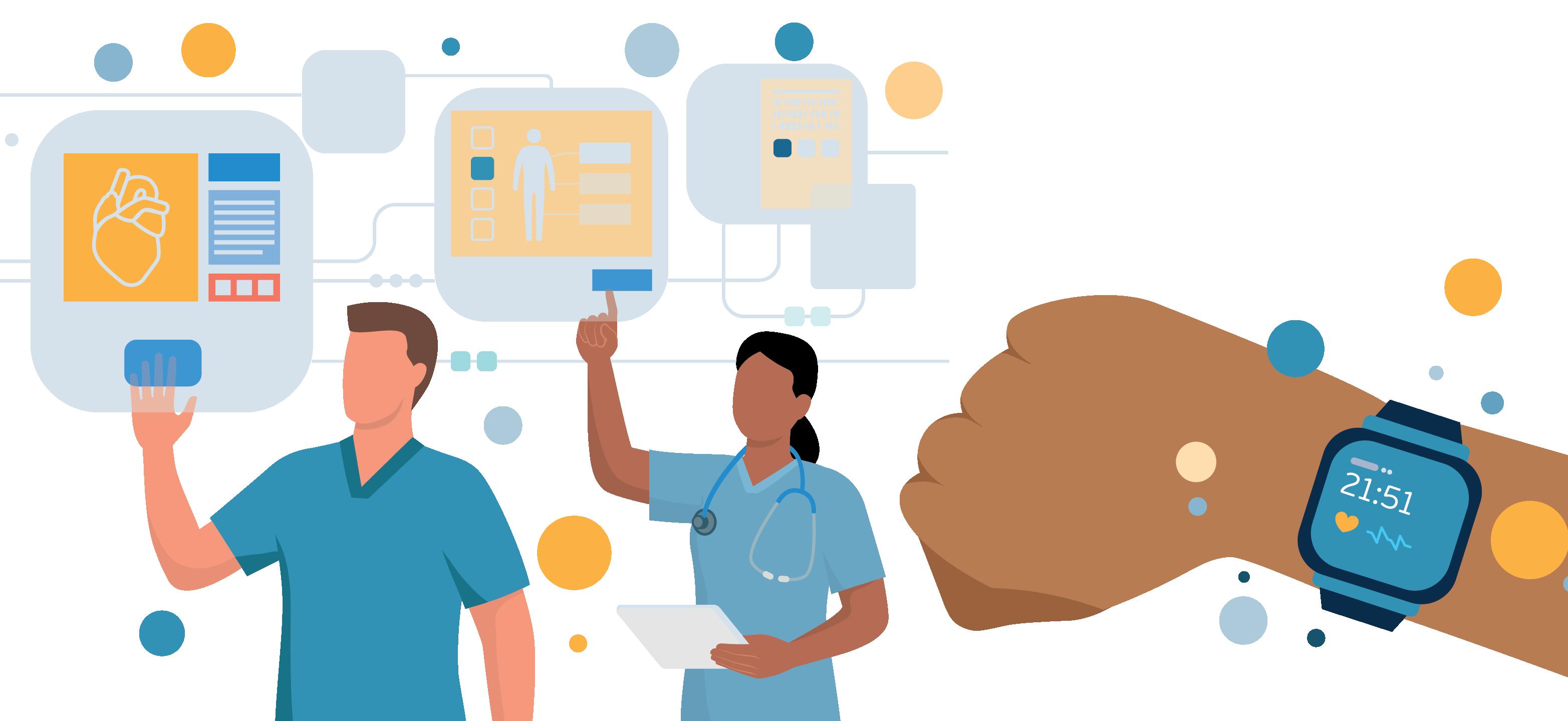
Tech sheds light on what the future of the NHS could look like, with organisations joining forces to help improve patient care.
Reasons we need tech collaborations for the NHS
The NHS is well-used to dealing with pressure. But in recent years, it has come under intense pressure — for a variety of reasons. While the ageing population is a cause for celebration, it’s also a massive challenge because it creates a higher demand for health services.
The long shadow of Covid-19 has also heaped extra stress onto an already burdened system, resulting in a backlog in elective care with long waiting times for patients. According to the BMA (British Medical Association), in February, more than 7 million patients were waiting to start NHS treatment. These issues have exacerbated health inequalities, contributing to poorer patient outcomes. In particular, women and those from deprived areas — who are already at higher cardiovascular risk — have poorer rates of cardiac rehabilitation uptake and programme completion.
Wearables can help alleviate NHS pressures and inequalities
Fortunately, advances in technology could help alleviate these pressures and inequalities. Take wearables, which have evolved significantly from step trackers to health companions. They can track heart rate variability, skin temperature and oxygen saturation (SpO2 levels), among other metrics.
For example, the Fitbit Sense 2 smartwatch includes an Irregular Heart Rhythm Notification feature (powered by a detection algorithm). It can passively assess a patient’s heart rate rhythm and notify them if there’s anything that might be suggestive of atrial fibrillation — one of the most common heart conditions.
Wearables could improve the way the NHS delivers cardiac rehabilitation services. This is important because cardiovascular disease is one of the UK’s biggest killers. Key cardiac services are recommended by NICE (the National Institute for Health and Care Excellence) as they reduce the risk of heart attacks, death and hospitalisation; lower healthcare costs; and improve quality of life.
In line with this, a new programme called DERIC (Digitally Enhanced Rehabilitation In Cardiac Patients) has been developed by healthtech company ConnectedLife. It leverages devices and services from Fitbit and Google Health.
Tackling cardiovascular disease by enabling holistic health tracking UK hospitals consistently fail to achieve targets for cardiac rehab uptake and completion. This is due to factors including lack of programme personalisation; the inconvenience of attending face-to-face sessions; gender bias; racial, socioeconomic, psychological and language barriers; and poor physical health. Low or no attendance rates can unduly impact those already facing health inequalities, including women and those from deprived backgrounds.
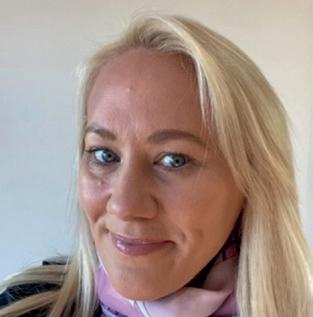
04 MEDIAPLANET A PROMOTIONAL SUPPLEMENT DISTRIBUTED ON BEHALF OF MEDIAPLANET, WHICH TAKES SOLE RESPONSIBILITY FOR ITS CONTENTS READ MORE AT HEALTHAWARENESS.CO.UK
INTERVIEW WITH Nicola Maxwell Head of Fitbit Health Solutions, Europe, Middle East and Africa
WRITTEN BY Tony Greenway
Wearables could improve the way the NHS delivers cardiac rehabilitation services.
DERIC enables cardiac rehabilitation to be delivered 100% remotely, in the patient’s own home. It helps them get back on their feet after a heart attack or heart surgery, with exercise, information sessions and support. It addresses barriers to face-to-face rehab and, as programmes are personalised, patients are more incentivised to take part. Cardiac rehab services are used by more than 100,000 patients in the UK annually. By making cardiac rehabilitation programmes more effective, wearables could help the NHS achieve targets and reduce future risks.
Currently, DERIC is in pilot mode, with The British Heart Foundation Data Science Centre at Health Data Research UK (HDR UK) advising on its design, conduct and analysis. Patients in the trial are using a smartwatch to measure their heart rate, rhythm and physical activity — while a ConnectedLife mobile app enables them to enter additional health data (such as blood pressure and weight) and answer questions about diet and other health information. They can also use it to view a summary of their activity and health and wellness data, as well as communicate with their care team.
How digital solutions benefit both patients and healthcare providers
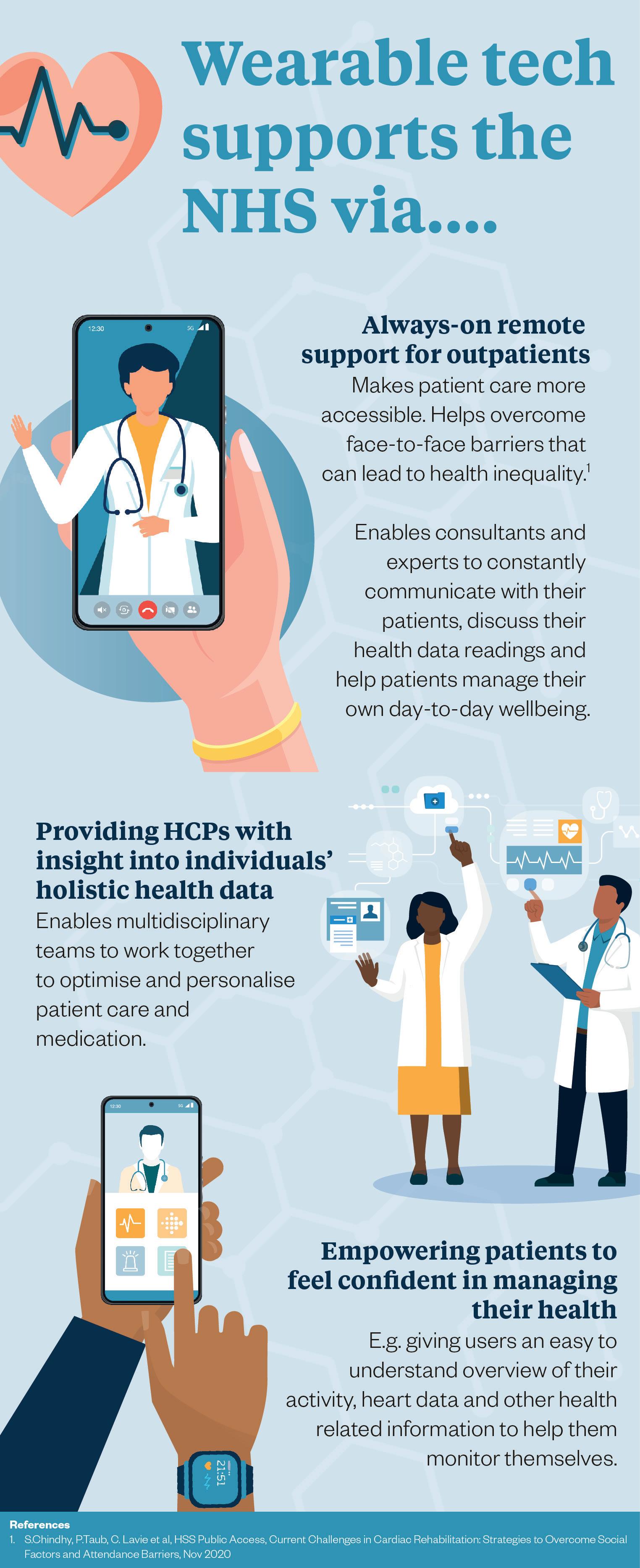
“The combination of Fitbit and ConnectedLife provides users with an overview of their activity, heart data and other health-related information, allowing them to manage their own day-to-day wellbeing,” says Nicola Maxwell, head of Fitbit Health Solutions, Europe, Middle East and Africa.
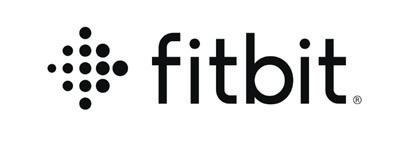
“This collaboration helps doctors, nurses and other health professionals to remotely monitor their patients. It could lead to better condition management and potentially reduce the burden on the healthcare system.”
Andrew Edmunds, director of innovation at Northumbria Healthcare NHS Foundation Trust — one of three trusts taking part in the trial alongside Sheffield Teaching Hospitals NHS Foundation Trust and Imperial College Healthcare NHS Trust — agrees. “Continually improving patient care and experience is always at the core of all we do,” he says. “Given the complex nature of cardiac rehabilitation and care, the need to widen participation and improve the quality of remotely delivered solutions is very apparent. We want to explore to what degree digital technologies may offer a solution, while also addressing health inequalities.”
Smart technology is also a way to save money. For instance, a paper published on JAMA Health Network in 2022 found that wearables may be a more cost-effective way to screen for atrial fibrillation.
Safely integrating digital technologies in patient care
Moreover, patients can rest assured that their health data is safe as DERIC is designed to be embedded securely within NHS systems. Other companies involved in its development have no access to patient medical records and will not be involved in the analysis of trial results. Going forward, wearable technology may help prevent medical problems from occurring. Researchers are finding that data from wearables could help predict not just the onset of disease but also hospital readmissions.
Over time, this data could be used by healthcare teams to reach patients at higher risk and help them stay out of hospitals. That would be a big breakthrough for an overstretched health service serving an ageing population. Wearables will continue to innovate over the coming decade, resulting in better health delivery while helping to relieve pressure on the NHS.
A PROMOTIONAL SUPPLEMENT DISTRIBUTED ON BEHALF OF MEDIAPLANET, WHICH TAKES SOLE RESPONSIBILITY FOR ITS CONTENTS READ MORE AT HEALTHAWARENESS.CO.UK 05 MEDIAPLANET
Find out more at fitbit.com Spread paid for by Fitbit
Smart technology is also a way to save money. For instance, a paper published on JAMA Health Network in 2022 found that wearables may be a more cost-effective way to screen for atrial fibrillation.
The practice of medicine in the age of pre-intelligence
A fundamental dichotomy exists within healthcare systems – they are designed by healthcare professionals, but they are needed by patients; and the two see things differently — the classic agency problem.
Doctors measure complications. Patients experience adverse events and live with the side effects. Which perspective takes precedence? Health and wellbeing aside, at a time of escalating healthcare costs and strained healthcare systems, there is a degree of urgency in revisiting this question.



Human and artificial intelligence in harmony
We live in the age of big data and algorithms fuelling artificial intelligence systems. The above question and inconsistencies will become more ‘visible’ in the not-too-distant future. Quoting an ‘acceptable complication rate’ while a much higher proportion of patients suffer an adverse event will not pass any more.
The ‘prudent patient’ expects and deserves to know the incidence of adverse events related to their treatment. Our profession is a noble one, and I do not wish for us to be caught off guard, yet again. I believe human intelligence can continue to maintain an edge over our AI systems and — coupled together — deliver what is needed. This does require us to be at the forefront, leading this change and not being dragged along by an increasingly distrustful audience.
WRITTEN BY Dr Layla McCay Director of Policy, NHS Confederation























Reducing health inequalities by providing quality care to all communities



Many local health and care systems across England are currently tackling major short and long-term challenges — exacerbated by the disruption caused by industrial action — and these have an impact on health inequalities.
Utilising artificial intelligence with humans in mind

I worry that, in the years to come, like preRenaissance, our generation of healthcare professionals will be branded as from the ‘pre–intelligence age’ — where we continue to distort the optimal management of our patients by our intrinsic biases (mostly subconscious) and shortcomings. An age where, if an error is not directly attributable to the surgeon, it ‘does not count.’

We must choose to make it an age where perspectives are acknowledged, data is respected and where we address our intrinsic biases and distortions and produce a thought stream leading this intelligence revolution. History must not punctuate our generation as the one between the pre and post-intelligence ages but, rather, a generation where natural intelligence, once again, rose to the challenge and harnessed this new tool of artificial intelligence for the improvement of the human condition.
WRITTEN BY Owase Jeelani MBA MPhil (Med. Law), FRCS, Consultant Paediatric Neurosurgeon















Tackling rising health inequalities and stagnating life expectancy requires sustainable cross-sectoral transformation towards prevention and health creation.
Partnerships addressing health inequalities











































The establishment of 42 Integrated Care Systems (ICSs), which are partnerships of organisations in local areas established to tackle multiple complex health and care needs across the country in July 2022, offers the opportunity for a generation to reduce regional disparities in healthcare and health outcomes.
The ICS infrastructure can allow the population’s physical and mental health to be seen through a ‘systems’ lens and allow integrated care to be better delivered in a more coordinated way across NHS primary, secondary and community care; local authorities; and Voluntary, Community and Social Enterprise (VCSE) organisations according to the health and care needs of local populations.
Levelling up health outcomes







Everyone being able to access good quality health and social care services is essential to ‘level up’ health outcomes. People from Black, Asian and
ethnic minority communities and other groups, such as migrants, disabled people, LGBTQ+ people and Gypsy Roma or Travellers have a significantly greater risk of poorer health outcomes, in part due to the barriers in getting the care they need.
Many local areas are using NHS England’s Core20PLUS5 framework to reduce health inequalities across people’s life courses, supported by national funding targeted at those areas with the greatest health inequalities.

Focusing on creating health over just treating ill health



For the NHS to improve population health outcomes equitably, it needs to transition and become a service that invests more time and energy towards prevention and health creation. Evidence exists that the NHS can help reduce health inequalities. However, this requires concerted cross-government departmental action; equitable distribution of resources, funding and workforce; and allowing local system leaders to lead on local priorities.
Given that health permeates all aspects of life, no one sector, organisation or individual can make this happen. Rather, a collective societal response is required to shift the dial on systemic local and regional health disparities.
06 MEDIAPLANET A PROMOTIONAL SUPPLEMENT DISTRIBUTED ON BEHALF OF MEDIAPLANET, WHICH TAKES SOLE RESPONSIBILITY FOR ITS CONTENTS READ MORE AT HEALTHAWARENESS.CO.UK
Everyone being able to access good quality health and social care services is essential to ‘level up’ health outcomes.
We live in the age of big data and algorithms fuelling artificial intelligence systems.
As we celebrate 75 years of the NHS — what’s next?
needed to make the technology effective for clinicians. When it is also underpinned by the latest cybersecurity and ubiquitous connectivity, it starts to make a huge difference.”
A space for co-creation ensuring safe technology
He insists that: “As we progressively move to new care models, underpinned by technology, they require the safe and efficient design of those systems so as not to create an additional burden in a live clinical setting.”
Therefore, BT has set up the Vanguard Programme where it works with healthcare organisations to monitor, evaluate and embed technology safely. It aims to identify NHS challenges and issues first, then develop innovative solutions together.
“A customer will say, ‘we have a particular problem around connectivity, virtual care, operational logistics or outdated IT’,” says Professor Mahmud.
“We bring proven technical expertise to help address those issues from real-time mobile data platforms, cybersecurity and other infrastructure and marry them with the practical knowledge of NHS clinicians and administrators to create solutions that actually work.”
For 75 years, communications systems have been right behind the NHS, in the background, providing the networks that help hospitals to function, supporting new technology and underpinning the critical 999 service on which all our emergency services rely.
Communications services company BT is redefining its relationship with the NHS through innovative digital technology and connectivity while building on the long-term partnership.
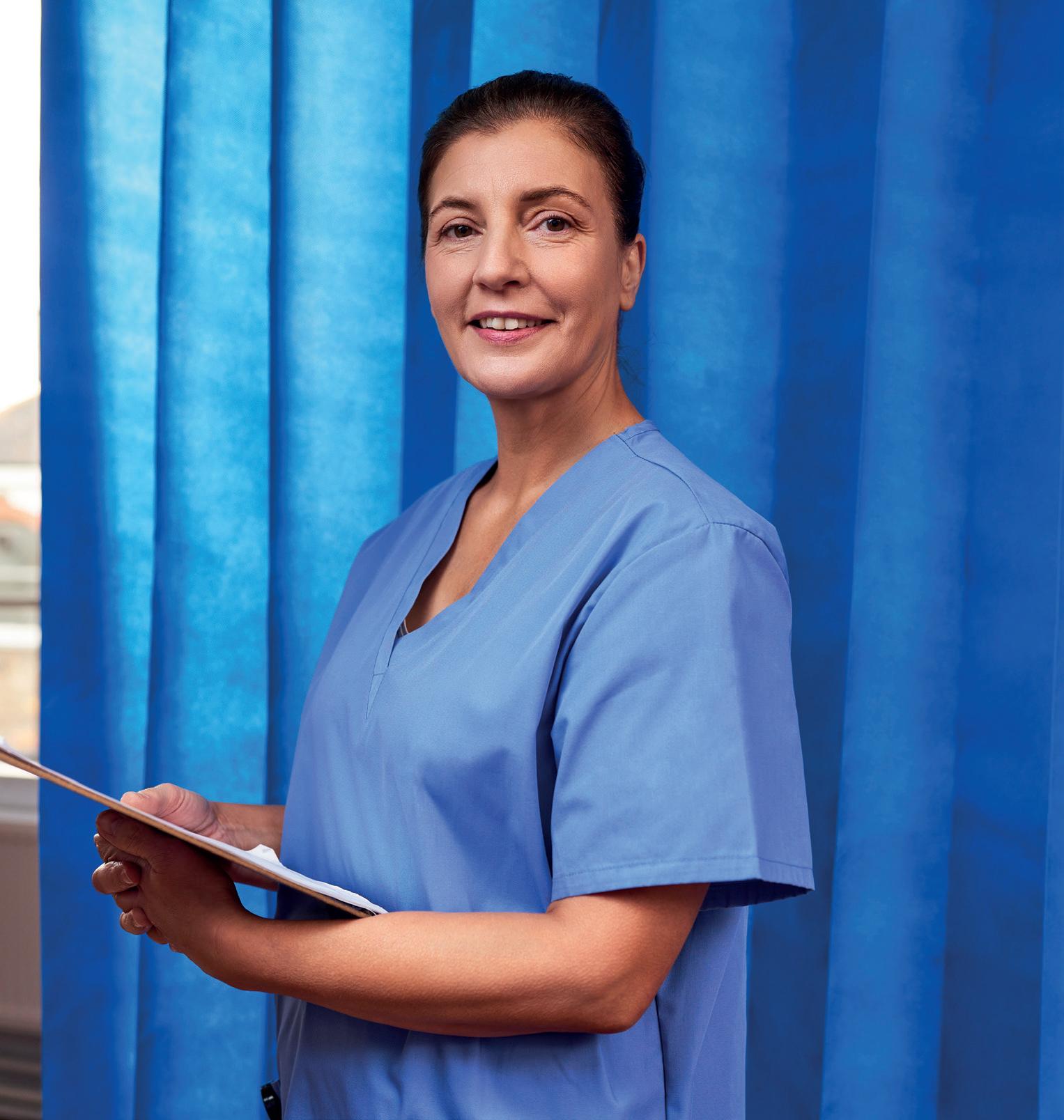
Greater NHS collaboration to enable smarter, safer and anticipatory care
“We are a communications company and our mission for the NHS is to connect clinicians, patients and machines to optimise care, release efficiencies and simplify manual processes. We have been doing this in many sectors with security and reliability, and we want to bring this expertise to bear in the NHS, explains Professor Sultan Mahmud, the company’s director of healthcare, following 20 years experience in the NHS.
The company is committed to technology-enabled integrated care delivery across primary, secondary and wider community care. From referral to treatment, to discharge and at all points where patients engage with the system, issues such
as duplication of processes and lack of capacity can be addressed by technology.
“It has been happening in pockets but we, as a national partner, can bring scale and impact and really move the dial on anticipatory, patient-centred care,” adds Professor Mahmud.

Care closer to home with virtual care
According to BT research of 197 staff at 136 different organisations within the NHS, 74% agree that technology helps to deliver better quality care, while the current standard of technology at work is a source of stress for 49%. In response to the findings, the telecoms company launched its virtual care programme alongside leaders in health technology.
Virtual care gives patients access to the healthcare services they need remotely, safely and conveniently — when it is clinically appropriate.
“Our virtual care programme provides the remote monitoring technology developed with leading industry partners, but also the change management expertise
Supporting staff to improve retention and care
For many, digitisation has been a challenge given wider pressures on healthcare teams and staff need support and training to keep pace with the change.
“If the work that an integrated care system is doing around technology-based care is effective, well-led and inclusive in approach, my experience is that NHS staff are motivated and excited to see changes to the ward, community or GP practice - it’s a retention factor.
The NHS remains a national treasure and developments such as virtual care and anticipatory data can have a huge positive impact. “The NHS at 75 now needs further collaboration and support from expert technology partners, to ensure that staff and patients can enjoy it for another 75 years.
“With technology to manage hospital capacity and patient data, retention of doctors, nurses and NHS management will hopefully improve. And, while connected communications can’t build more hospitals or train doctors and nurses, it can surely make the day-to-day experience of healthcare better for everyone.”
A PROMOTIONAL SUPPLEMENT DISTRIBUTED ON BEHALF OF MEDIAPLANET, WHICH TAKES SOLE RESPONSIBILITY FOR ITS CONTENTS READ MORE AT HEALTHAWARENESS.CO.UK 07 MEDIAPLANET
Find out more at business.bt.com/ public-sector/ organisations/ health/ Paid for by BT
INTERVIEW WITH Professor Sultan Mahmud Director of Healthcare, BT
Image provided by BT
WRITTEN BY James Martin
By identifying these patients early on, healthcare providers can intervene before the condition worsens, potentially saving lives and reducing the burden on staff.
How automation and big data boost NHS workforce efficiencies

The continued development and adoption of automated and data-driven technologies will be critical in ensuring the NHS continues to provide world-class healthcare.
The NHS is facing workforce issues including staff shortages, burnout and low morale. The use of big data and technology can help to address these issues by supporting the workforce in several ways.
Patterns in big data can help NHS
One way big data is being used is to help identify areas where staff are most needed. By analysing data on patient flow, hospital admissions and staff availability, hospitals can predict where there may be surges in demand and adjust staffing levels accordingly. This not only helps ensure that patients receive timely care but also helps prevent staff burnout by avoiding situations where they are stretched too thin.
Artificial intelligence supports early intervention
Another area where big data is being used is in the development of predictive analytics tools. These tools use machine learning algorithms to analyse patient data and identify those who are at risk of developing certain conditions or complications. By identifying these patients early on, healthcare providers can intervene before the condition worsens, potentially saving lives and reducing the burden on staff.
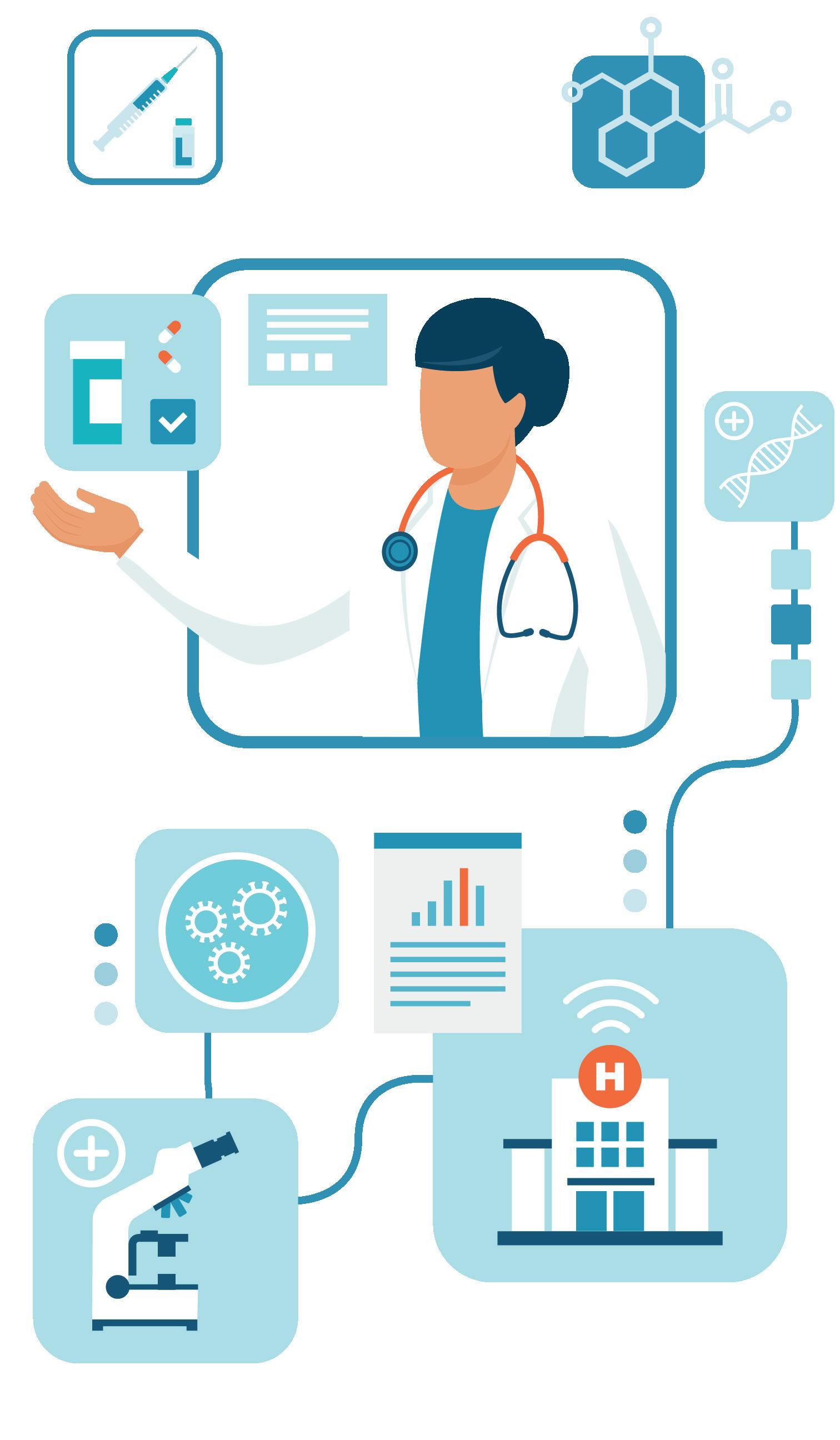
Wearables and remote monitoring
In addition to big data, there have been technological and system advances aimed at supporting healthcare workers. One such innovation is the use of wearable devices and remote monitoring to track vital signs and provide real-time feedback to staff. This can help alert staff to potential issues before they become serious and help monitor patients who require close attention.
Removing low-value tasks
In addition to these examples focused on care delivery, technology can be used to automate administrative tasks. Freeing up time for clinicians to spend on direct patient care and allowing administrators to focus on higher-value tasks can help to improve the efficiency of the NHS.
Systematic adoption of technology is needed
Despite significant technological advances during the Covid-19 pandemic, the NHS is still in the early stages of systematic deployment of such technologies, but it has the potential to revolutionise the way the NHS works.
By supporting the workforce and improving the quality of care, technology can help make the NHS a more efficient healthcare system. While there are challenges to be overcome, the continued development and adoption of these tools will be critical in ensuring that the NHS can continue to provide world-class healthcare to patients across the UK.
08 MEDIAPLANET A PROMOTIONAL SUPPLEMENT DISTRIBUTED ON BEHALF OF MEDIAPLANET, WHICH TAKES SOLE RESPONSIBILITY FOR ITS CONTENTS READ MORE AT HEALTHAWARENESS.CO.UK Digital Health Lead, ABHI
WRITTEN BY Angelica O'Toole
How we can unlock the value of real-world data to support healthcare
The power of real-world data for evidence-based decision-making is increasingly apparent in healthcare. It can reflect real-life patient experiences across a large and very diverse population.
Real-world data allows for a more comprehensive view of effectiveness and safety, enabling healthcare providers to make more informed decisions and deliver better healthcare outcomes. Clinicians, medical policymakers, life science companies and patients are all eager to gather and share data and turn that data into better healthcare.
However, a lack of reliable infrastructure and standardisation hinders progress. Fortunately, there are innovative solutions to address this challenge, as explained by Femke Oldenziel, Real-World Evidence Lead at LOGEX.

What sparked your interest in real-world evidence (RWE)?
During my decade as a healthcare consultant, I was always surprised by the limited understanding of how patients are treated in daily practice. Basic insights, such as treatment allocation, were surprisingly difficult to obtain.
Ideally, decisions should be based on factual evidence of how treatments affect the actual patient population, rather than relying on gut feelings or anecdotal experiences. However, limited access to real-world data makes it challenging to determine which treatments are most effective.
What is the solution to real-world data access?
A powerful first step is helping care providers easily collect and securely share their real-world data. This enables the transformation of real-world data into real-world evidence and supports clinicians in
Why the doctor will see you now, via a video conference call
Video conferencing technology is creating a powerful opportunity for the healthcare sector by improving access for patients while helping practitioners become more efficient.
making evidence-based decisions. LOGEX has achieved this by launching its Actionable Real-World Evidence Network (ARWEN), which has attracted hospitals from all over Europe, including the UK. Together, they enhance our understanding of healthcare delivery and patient-specific outcomes, empowering stakeholders to make meaningful improvements.
How can real-world data add value, aside from improving care?
Today, achieving cost-effectiveness in healthcare is crucial. The NHS operates in silos, where specific data is inaccessible, making it nearly impossible to gain valuable insights into patient-specific costs and expenditures.
Without clear visibility into the actual costs of patient pathways, it becomes challenging to identify unusual spending patterns. This is why we combine ARWEN's realworld evidence with LOGEX benchmarking, enabling us to pinpoint areas for cost optimisation without having to compromise patient and clinical outcomes.
The pandemic increased the role of remote healthcare. That includes medical practitioners having virtual appointments with their patients via video call, otherwise known as ‘telehealth.’
“The world is permanently hybrid now,” says Andy Tyra, CEO of video conferencing company Whereby. “While interest in virtual events decreased after Covid-related restrictions were lifted, telehealth consultations, particularly those concerning mental health, have proved to be durable because patients and practitioners alike saw benefits from this way of working.”


Why does video conferencing work for telehealth?
“It starts with accessibility. Video conferencing gives patients easy access to practitioners, regardless of geography. For example, if they need to see a specialist, but live in a remote part of the country, telehealth is a remarkable connection tool. “Ease of access also makes patients more proactive participants in their own healthcare,” argues Tyra. “Instead of scheduling a GP appointment weeks beforehand, then taking time off work and travelling to the surgery, they can just click on a link and talk to their doctor. Convenience creates a behaviour change which increases patient engagement.”
Telehealth is a big benefit for the NHS. “It allows for more effective
We now have countless examples of how this delivers immediate and actionable benefits. The idea that unlocking the value of data is just a theoretical exercise, or wishful thinking for a hospital, is no longer true. INTERVIEW
Find out more at logex.com
For more about the Actionable Real-World Network, visit arwen.eu
triage of patients and allocation of precious resources,” says Tyra. “A practitioner can talk to a patient and assess if their problem can be solved there and then, or if further in-person consultation or examination is necessary.”
Telehealth must be easy to use, safe and secure
Naturally, any telehealth solution must be easy for patients to use.
“For instance, our product can run efficiently inside a web browser on a computer or mobile phone,” says Tyra. “Patients don’t need to download an app or set anything up; they simply access the video call through their trusted patient portal.
“They also need assurance that calls will be secure and their details will be safe. It’s critical for any company operating in this space to be GDPR-compliant. We go beyond that and keep nothing personal or identifiable about a patient. Once a call has ended, no details are kept, and nothing is stored other than a log that it took place.”
Tyra stresses that telehealth isn’t about replacing face-to-face medical interactions entirely. “It’s about getting both options — video and in-person consultations — to work together to improve options for patients, increase their level of care, and make the healthcare system more efficient."
Whereby has its 10-yearold origins in traditional telephony and video conferencing. In the UK, it partners with healthcare tech companies like Accurx, DrDoctor and others. It also works with partners like Unobravo and Tebra to power many of the world’s mental health and medical technology platforms.
A PROMOTIONAL SUPPLEMENT DISTRIBUTED ON BEHALF OF MEDIAPLANET, WHICH TAKES SOLE RESPONSIBILITY FOR ITS CONTENTS READ MORE AT HEALTHAWARENESS.CO.UK 09 MEDIAPLANET
WITH Andy Tyra CEO, Whereby WRITTEN BY Tony Greenway
Paid for by LOGEX Paid for by Whereby
Ease of access also makes patients more proactive participants in their own healthcare.
INTERVIEW WITH Femke Oldenziel Real-World Evidence Lead, LOGEX
A powerful first step is helping care providers easily collect and securely share their real-world data.
Scan the QR code to find out more
Helping the NHS recover and provide improved services for patients
Over the years, the NHS has adapted and developed at an incredible pace to provide healthcare services through pandemics, digital transformations and more.
 WRITTEN BY Jasmin Adebisi Policy Manager, Policy Connect
WRITTEN BY Jasmin Adebisi Policy Manager, Policy Connect

An important development for the NHS in recent years has been the power of healthcare partnerships, with different service providers across health and social care. But despite often being the most accessible local healthcare providers, high street healthcare providers often find themselves faced with similar challenges as primary and secondary care providers.
Increasing patient access to NHS services
The Government’s aim to integrate these services more effectively into the wider health service appears to have progressed, following the recent announcement of the Primary Care Recovery Plan. It includes plans for patients suffering from common ailments to be able to get prescriptions directly from pharmacists, bypassing GPs for treatment in a bid to relieve pressures on surgeries and speed up access. Set to begin in the winter months, this scheme could lead to improved patient pathways and access to
treatment. It could also alleviate pressures on the NHS workforce. If we ensure access to NHS services for all patients, we can help reduce health inequalities and improve the experience for both patients and staff.
Creating better conditions for NHS staff
On top of improving patient experience, we must also ensure that we support the physical and mental wellbeing of the NHS staff. The workforce makes up the backbone of the NHS and needs to be prioritised.
The Government needs to honour its commitment to publishing a ‘comprehensive’ NHS Workforce Plan this year. This should set out ways to improve and provide appropriate investments to support the retention and recruitment of staff and practitioners, which will alleviate pressures.
The All-Party Parliamentary Health Group and Policy Connect will be hosting a panel discussion on last year’s NHS recovery plan. With key voices from the sector, we will look at how far the NHS has come and what the workforce requires to ensure an improved NHS service.
10 MEDIAPLANET A PROMOTIONAL SUPPLEMENT DISTRIBUTED ON BEHALF OF MEDIAPLANET, WHICH TAKES SOLE RESPONSIBILITY FOR ITS CONTENTS READ MORE AT HEALTHAWARENESS.CO.UK
The workforce makes up the backbone of the NHS and needs to be prioritised.
As the enabling partner for NHS Supply Chain, Unipart manages

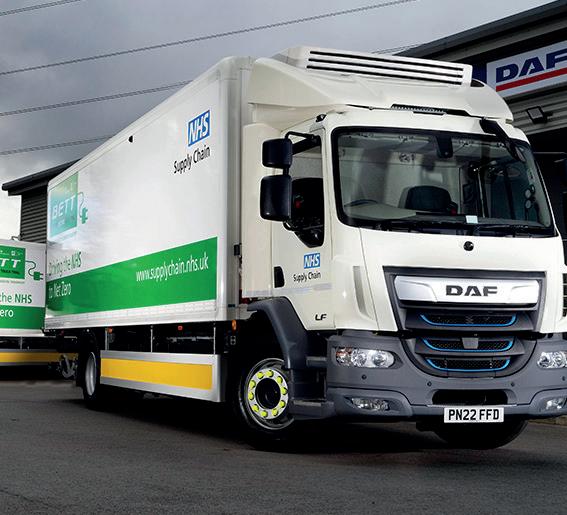

From 8 Distribution Centres to the inventory management of more than 900 suppliers and the delivery of more than 4.5 million orders annually of consumables, high value and discreet healthcare products to NHS providers and direct to service users in their homes.

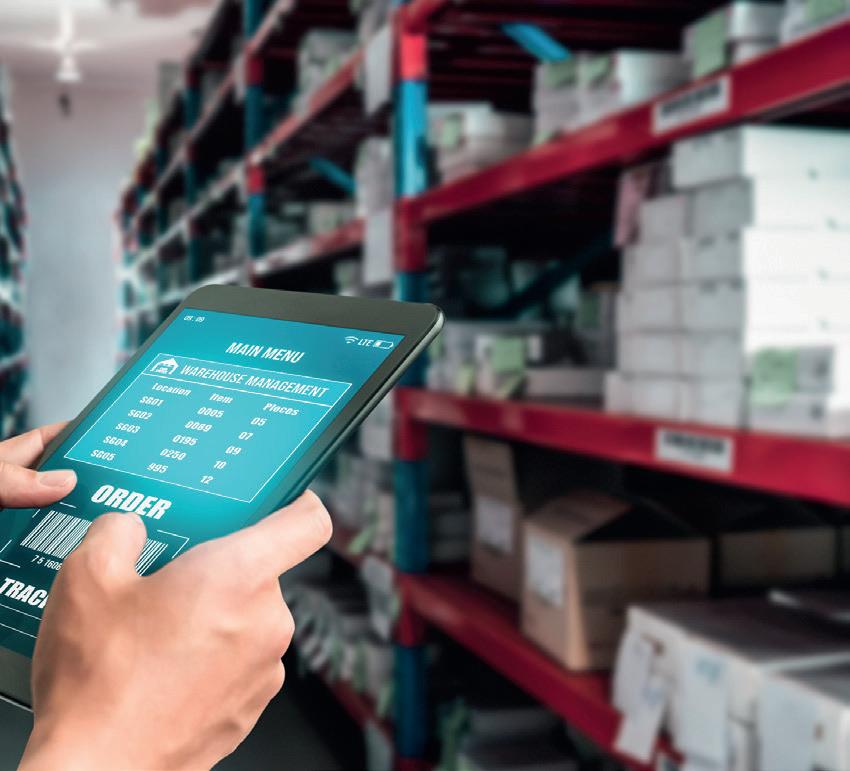
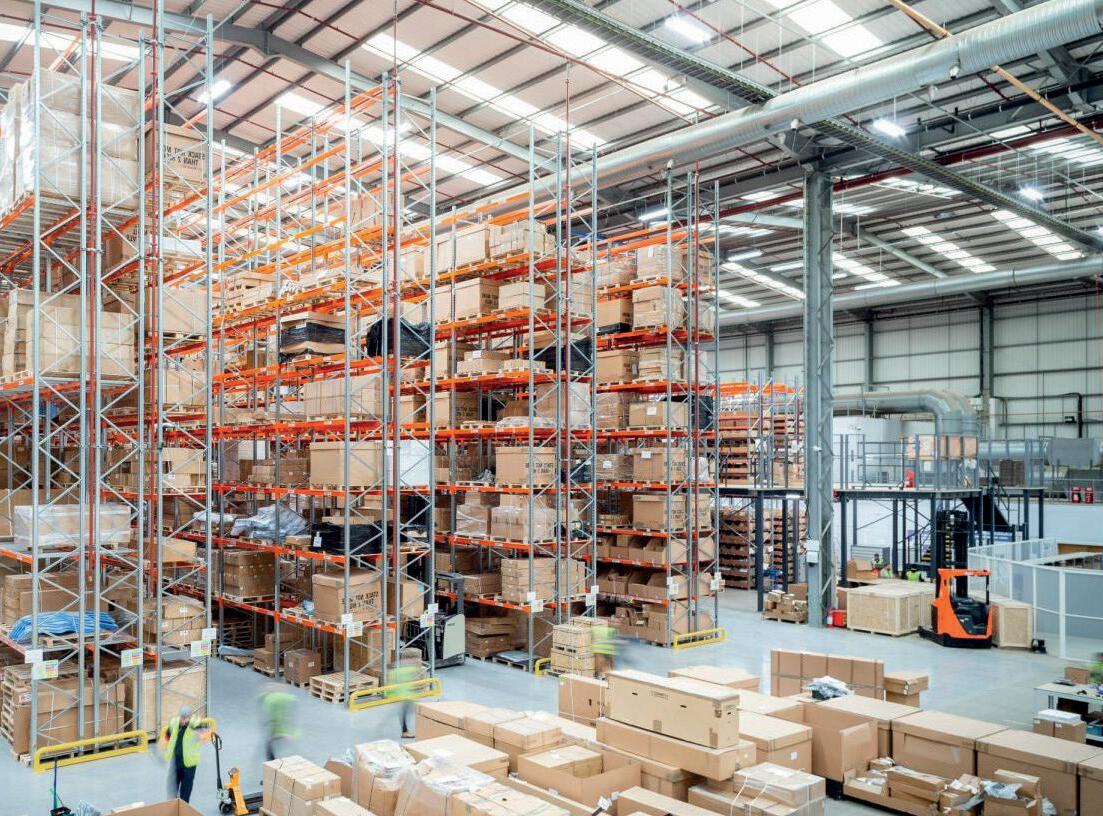
We provide customer service solutions to NHS trusts using NHS Supply Chain and cover more than 14 million miles every year, making sure the NHS has what it needs, when it needs it, delivering best in class outcomes for NHS frontline and patients.

Unipart Logistics and NHS Supply Chain - ‘Warehouse Initiative’ for the opening of a new state-of-the-art facility in Bury St Edmunds.
www.unipartlogistics.com

A PROMOTIONAL SUPPLEMENT DISTRIBUTED ON BEHALF OF MEDIAPLANET, WHICH TAKES SOLE RESPONSIBILITY FOR ITS CONTENTS READ MORE AT HEALTHAWARENESS.CO.UK 11 MEDIAPLANET
Warehousing Transport including Green Solutions Inventory Management Home Delivery Supplier Management Customer Service Scan our QR code and see how we can help future proof your organisation
all aspects of the logistics service
A greener NHS: working in partnership towards a carbon-free future in asthma care
Every year, the world feels the effects of the climate crisis, and our current trajectory towards 1.5°C global warming demands urgent action.1 A partnership is setting an example of improving respiratory care and health outcomes while reducing CO2 emissions.
Many industries significantly impact the environment, and healthcare is no different. The NHS contributes 4% of overall emissions in the UK.2 Medicines constitute part of this footprint.
Working towards a healthier planet with healthier people
WRITTEN BY Tom Keith-Roach President, AstraZeneca UK

Short-acting beta-agonist (SABA) ‘blue inhalers’ make up 2% of all NHS emissions.3 These SABA inhalers are widely overused4 and for far too long have been the backbone of asthma care.
Leading clinical societies — for example, both the Global Initiative for Asthma (GINA) and the UK Primary Care Respiratory Society — have issued guidance in which SABA-only treatment is to be avoided for safety reasons, and SABA is no longer the preferred reliever treatment.5,6
The impact on wellbeing and the environment from using SABAs has been staggering. People with asthma who consume three or more blue inhalers per year account for 83% of SABA usage, resulting in over 250,000 tonnes of CO2 emissions annually. 7
At AstraZeneca UK, our mission is to provide exceptional patient care to help play our part in striving towards a healthy planet with healthy people. We are taking bold action on the climate crisis and pursuing ambitious decarbonisation targets through purpose-led partnerships and the implementation of sustainable healthcare solutions. We are committed to achieving net zero carbon by 2045. We’re partnering with the NHS to support this, and SENTINEL is one powerful example.
Transforming asthma care
SENTINEL is an AstraZeneca-sponsored partnership with Hull University Teaching Hospitals NHS Trust and Hull York Medical School. It identifies and risk-stratifies those with asthma who are over-reliant on SABAs and, where appropriate, supports their transition to other care plans, per recent guidelines. This partnership is also aimed at mitigating the carbon footprint associated with asthma care.
Since the inception of SENTINEL in 2020, participating primary care networks (PCNs) — originally just six — have prescribed over 44,000 fewer SABA inhalers than they would have if prescribing patterns had remained unchanged, translating into a saving of approximately 1,240 metric tonnes of CO2 equivalent.8
SENTINEL is now being implemented in more than 300 PCNs across the UK,9 and we hope there will be many more by the end of this year. In delivery and through evidence, the incredible team in Hull has showcased a remarkable triumph: the ambitious yet achievable goal of reducing the carbon footprint that results from treating respiratory conditions, while helping to improve asthma care.
Fostering partnerships for a sustainable future SENTINEL exemplifies how companies can partner with the NHS in the pursuit of positive outcomes for patients and the environment. New, proactive, value-based models of care with a focus on prevention offer massive opportunities to help improve patient pathways and outcomes while reducing and eliminating carbon emissions.
Beyond respiratory care, another example is the AstraZeneca sponsorship of the Newcastle upon Tyne Hospitals NHS Foundation Trust and the Sustainable Healthcare Coalition in developing an In-centre Haemodialysis Carbon Calculator (ICHD) to enable hospitals to assess their haemodialysis units’ carbon footprint.

This tool allows hospitals to make their haemodialysis service more sustainable and to understand the savings that could be achieved by early detection and secondary prevention of chronic kidney disease (CKD). We hope adopting this calculator will trigger the next wave of partnerships with the aim of improving outcomes and reducing the carbon footprint across the CKD treatment pathway. We are committed to driving meaningful change in healthcare, and we are excited to collaborate further to support the NHS in reducing carbon emissions not just in asthma and CKD care but also across other disease areas.
References
1. IPCC. Global Warming Special Report. Global Warming of 1.5°. Available at https://www.ipcc.ch/sr15/. Last accessed June 2023
2. Greener NHS. National ambition. Available at: https://www.england.nhs.uk/ greenernhs/national-ambition/. Last accessed June 2023
3. S26 An assessment of short-acting β 2-agonist (SABA) use and subsequent greenhouse gas (GHG) emissions in five European countries and the consequence of their potential overuse for asthma in the UK. Available at https://thorax.bmj.com/content/76/Suppl_1/A19.1#T1. Last accessed June 2023
4. Janson C, Menzies-Gow A, Nan C, Nuevo J, Papi A, Quint JK, Quirce S, Vogelmeier CF. SABINA: An overview of Short-Acting β 2-Agonist use in asthma in European countries. Adv Ther. 2020;37(3):1124-1135
5. Reddel HK,FitzGerald JM,Bateman ED, et al. GINA 2019: a fundamental change in asthma management. Eur Respir J 2019;53:1901046
6. Primary Care Respiratory Society. Focus on asthma: The GINA Approach to Managing Asthma. Available at https://www.pcrs-uk.org/resource/focusasthma-gina-approach-managing-asthma. Last accessed June 2023
7. SENTINEL Plus. Partnering to improve patient outcomes. Available at https:// sentinelplus.info/. Last accessed June 2023
8. NHS and Government back AHSNs to continue to lead innovation, under new name. Yorkshire & Humber AHSN. Available at https://www.yhahsn.org.uk/ news/nhs-and-government-back-ahsns-to-continue-to-lead-innovation/. Last accessed June 2023
9. Transforming Lives Through Innovation Impact Report 2022-23. Yorkshire & Humber AHSN. Available at https://www.yhahsn.org.uk/wp-content/ uploads/2023/05/AHSN-Impact-Report-2023.pdf. Last accessed June 2023
GB-46347 | Date of Preparation: June 2023
12 MEDIAPLANET A PROMOTIONAL SUPPLEMENT DISTRIBUTED ON BEHALF OF MEDIAPLANET, WHICH TAKES SOLE RESPONSIBILITY FOR ITS CONTENTS READ MORE AT HEALTHAWARENESS.CO.UK
Paid for by AstraZeneca Learn more at astrazeneca.co.uk













































































 WRITTEN BY Jasmin Adebisi Policy Manager, Policy Connect
WRITTEN BY Jasmin Adebisi Policy Manager, Policy Connect










